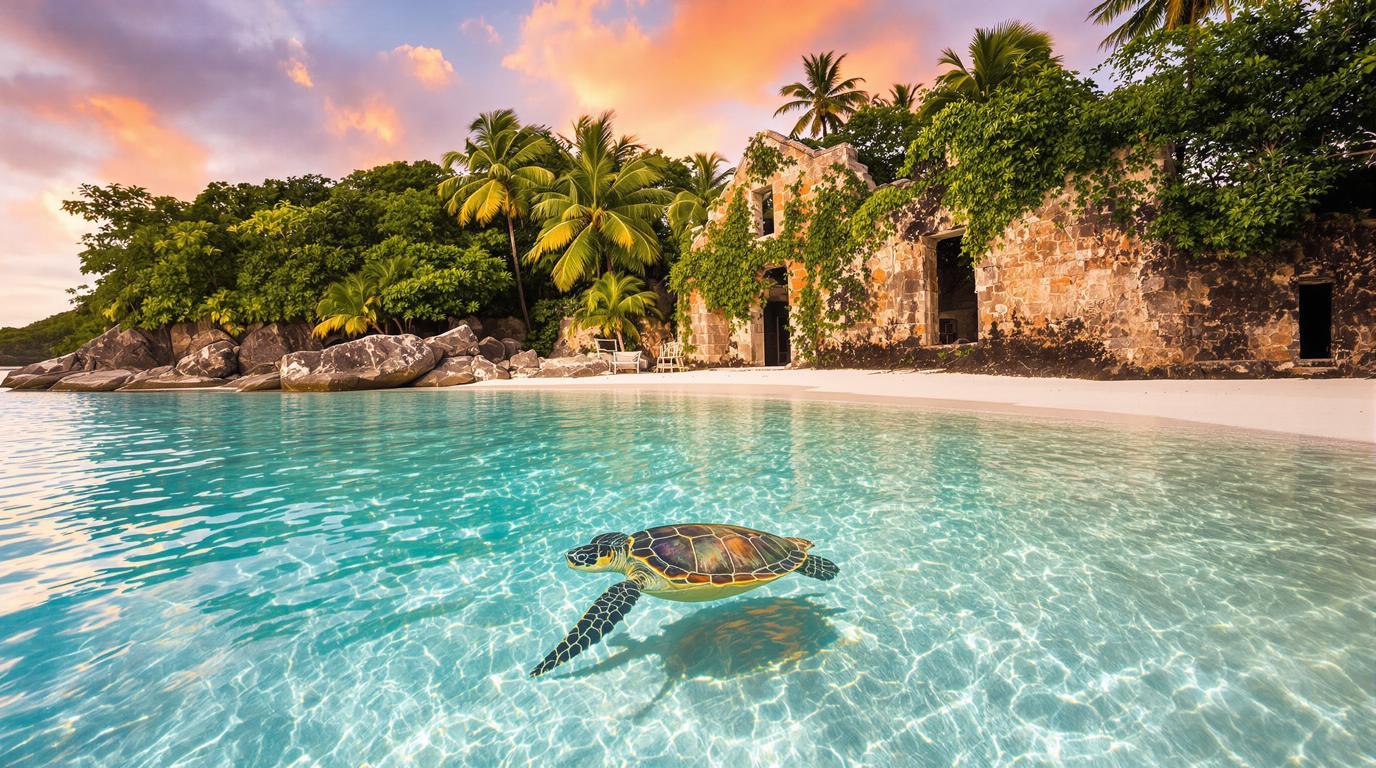St. John: The Caribbean’s Hidden Sanctuary Where Nature Reigns Supreme
A paradise preserved by accident
Two-thirds of St. John island remains untouched by development—not by government mandate but through one man’s vision. When Laurance Rockefeller purchased most of the island in 1956, he donated 5,000 acres to the National Park Service, creating an accidental eden in the U.S. Virgin Islands that offers pristine experiences increasingly rare in the Caribbean.
While cruise ships flood nearby St. Thomas with thousands of tourists daily, St. John remains blissfully uncrowded, accessible only by ferry and without a single traffic light on the entire island.
“People come to St. John to disconnect. We have no airport, no cruise ship dock, and that’s exactly why it remains special,” explains Michael Barry, a local guide who’s lived on the island for 25 years.
The beach that launched a thousand Instagram posts
Trunk Bay’s crystal-clear waters host an underwater snorkeling trail marked with interpretive signs, allowing even novice swimmers to identify coral formations and tropical fish. The white-sand crescent consistently ranks among the world’s most beautiful beaches, though locals prefer the less-visited Maho Bay, where sea turtles feed on seagrass just feet from shore.
Morning visitors to Maho often find themselves alone with these gentle creatures, creating wildlife encounters reminiscent of the Galapagos, but without the steep price tag or restrictive permits.
Hiking trails that tell America’s complex history
The Reef Bay Trail descends through tropical forest to ancient Taíno petroglyphs and ruins of sugar plantations—physical reminders of both indigenous culture and the island’s dark history of slavery. The 2.4-mile path feels worlds away from the beaches, with massive kapok trees and the occasional mongoose rustling through underbrush.
For spectacular views, the Rams Head Trail leads to a dramatic cliffside lookout where waves crash 200 feet below. Time your hike for sunrise and you’ll understand why locals consider this St. John’s spiritual center.
The ruins reclaimed by nature
At Annaberg Plantation, crumbling stone windmills and sugar factory walls tell the story of the island’s colonial past. Now overtaken by flowering vines and tropical foliage, these structures offer photographers haunting scenes reminiscent of medieval European ruins, but with palm trees swaying in the backdrop.
“These ruins speak volumes about our history,” says local historian Eleanor Gibney. “They’re not just picturesque—they’re our island’s memory carved in stone.”
The floating taco bar that’s worth the swim
Perhaps St. John’s most unusual dining experience is Lime Out, a floating taco bar anchored in Coral Bay. Accessible only by boat or a short swim, this solar-powered eatery serves fresh fish tacos and craft cocktails to patrons perched on partially submerged stools.
The concept would seem gimmicky elsewhere, but against the backdrop of St. John’s unspoiled Hansen Bay, it’s an experience that encapsulates the island’s quirky charm and commitment to environmental sustainability and underwater beauty.
The night sky spectacle few travelers witness
With minimal light pollution, St. John offers Caribbean stargazing at its finest. Salt Pond Bay on the island’s southeast side provides unobstructed views of the Milky Way. During new moons, bioluminescent microorganisms in the bay create an ethereal glow when disturbed—a phenomenon that mirrors the mysterious natural light displays of remote lakes worldwide.
When paradise rebuilds itself
St. John’s resilience following 2017’s devastating hurricanes Irma and Maria stands as testament to both nature’s regenerative power and human determination. Trails once blocked by fallen trees now welcome hikers again, and coral reefs show promising recovery.
“The island heals faster than anywhere I’ve seen,” says marine biologist Dr. Caroline Rogers. “Within months of the storms, we documented new coral growth in areas we feared were permanently damaged.”
The island’s recovery offers lessons in sustainability that visitors witness firsthand as they explore coves and bays where nature has staged its remarkable comeback.
Beyond the beaches
While St. John’s underground offerings don’t match the extensive cave systems found in volcanic regions, the island’s interior forest canopy provides its own form of sanctuary. Guided night hikes reveal a different side of the island, where tiny tree frogs called coquís perform their distinctive evening chorus.
St. John doesn’t flaunt itself like other Caribbean destinations. It reveals itself slowly to those willing to venture beyond the obvious, rewarding travelers with authentic experiences increasingly difficult to find in our hyperconnected world—a true American paradise hiding in plain sight.
